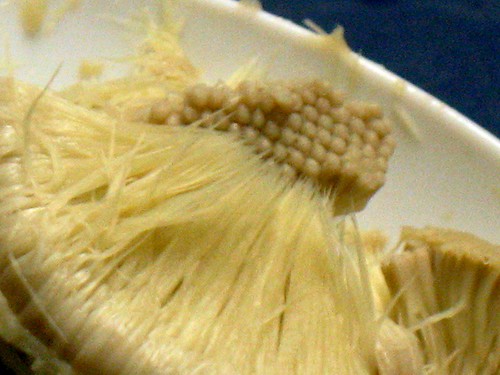I was recently given a large bag of slightly overripe plums, so I did what one does with large quantities of fruit that won't get eaten. I made jam.
Before we get started on the actual recipe, I should just debunk a few jam myths:
- 'Pound for pound' for all jams, i.e. use a pound of sugar per pound of fruit. Not all fruits work well with these proportions.
- Only use fresh fruit, preferably under ripe. You can make jam with frozen fruit, and you can also use very ripe fruit, but you might want to add a source of pectin.
Plums - as many as you have
Sugar - equal weight to plums (if you ca get preserving sugar, great, but it's not essential)
Water 30ml per 500g of plums
Lemon juice - half a lemon per 500g of plums. If your plums are very ripe, up the lemon juice quantity
Jam jars with lids (see below for yield information)
Method
- Wash plums.
- Place the plums and water in a large saucepan (better to err on the large side, you will need extra space when it boils up) and stew slowly until the skins are soft. I have a tendency to assault them with a wooden spoon during this stage, to release the juices.
- Add the sugar and stir until the sugar has dissolved.
- Add the lemon juice and boil rapidly without stirring until the jam reaches 105C (220F). I use a sugar thermometer, but there are other ways of testing a jam for readiness. I found that this stage went very quickly for purple plums, but it varies from fruit to fruit and also depends on the ripeness of the fruit.
- While the jam is boiling, sterilise the jars. You can expect a yield of 1.66 times the weight of the fruit you used. Make sure you have enough bottles!
- Before bottling the jam, prepare the bottles with boiling water, or they will crack from the heat of the jam.
- Fill the jars right up and immediately screw the lids on. As the jam cools, it will shrink slightly, drawing the lid down and sealing the jars properly.
- Wait for the jam to cool and set and enjoy on toast with cheese.





































